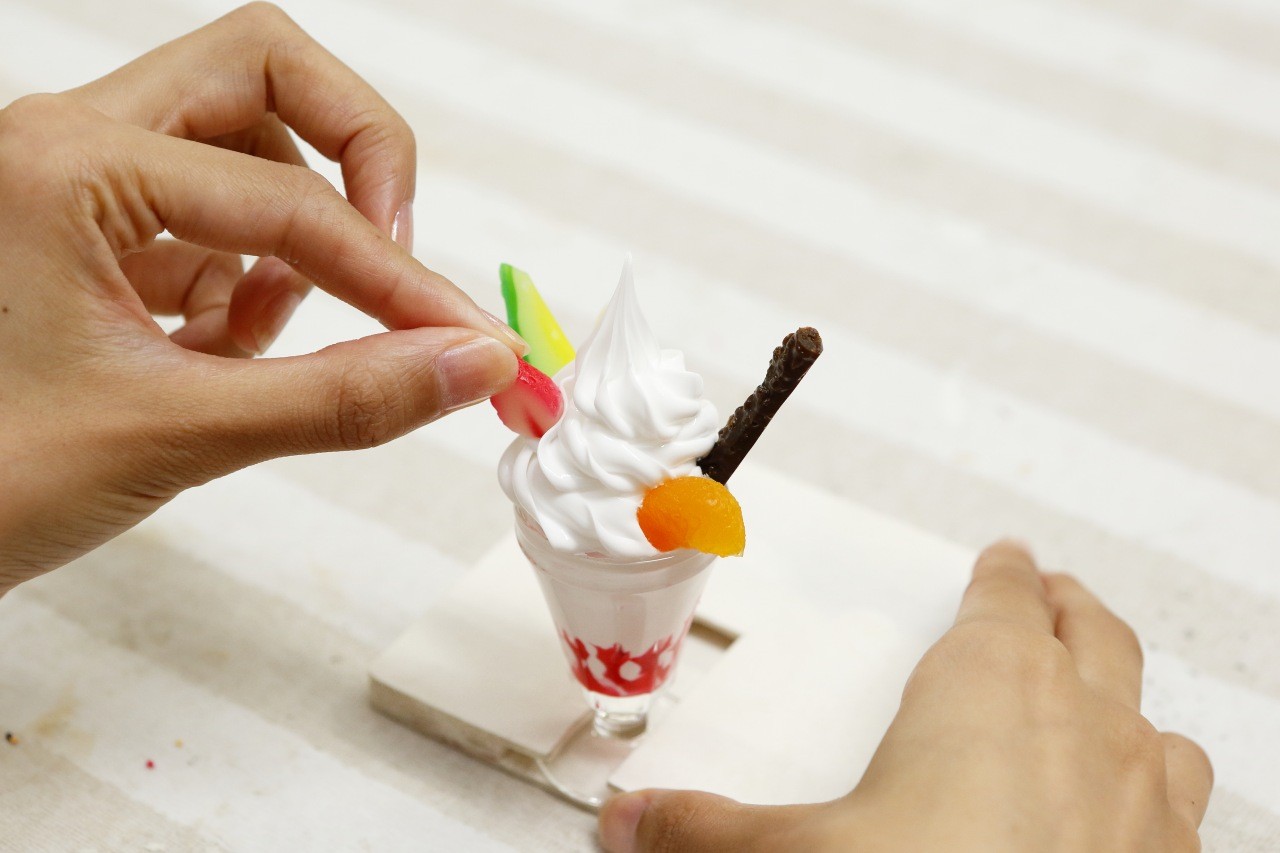
They look just like real food, but you can't eat them—these are the mysterious creations known as food samples. You've probably seen them in restaurant display windows.
Food samples actually originated in Japan, and today, they're gaining popularity both domestically and abroad as interactive experiences that are "fun to look at" and "fun to make." Recently, they're also trending as unique everyday items like keychains and stationery. In this article, we’ll dive into the origin story of food samples, the highly skilled craftsmanship behind their creation, and highlight places across Japan where you can try making them yourself or pick up a quirky souvenir.
Experience this uniquely Japanese art form that’s more real than the real thing!
*By purchasing or reserving products introduced in this article, a portion of the sales may be returned to FUN! JAPAN.
🚅Book your Shinkansen ticket with NAVITIME Travel! 👉 Click here
What Are Food Samples?
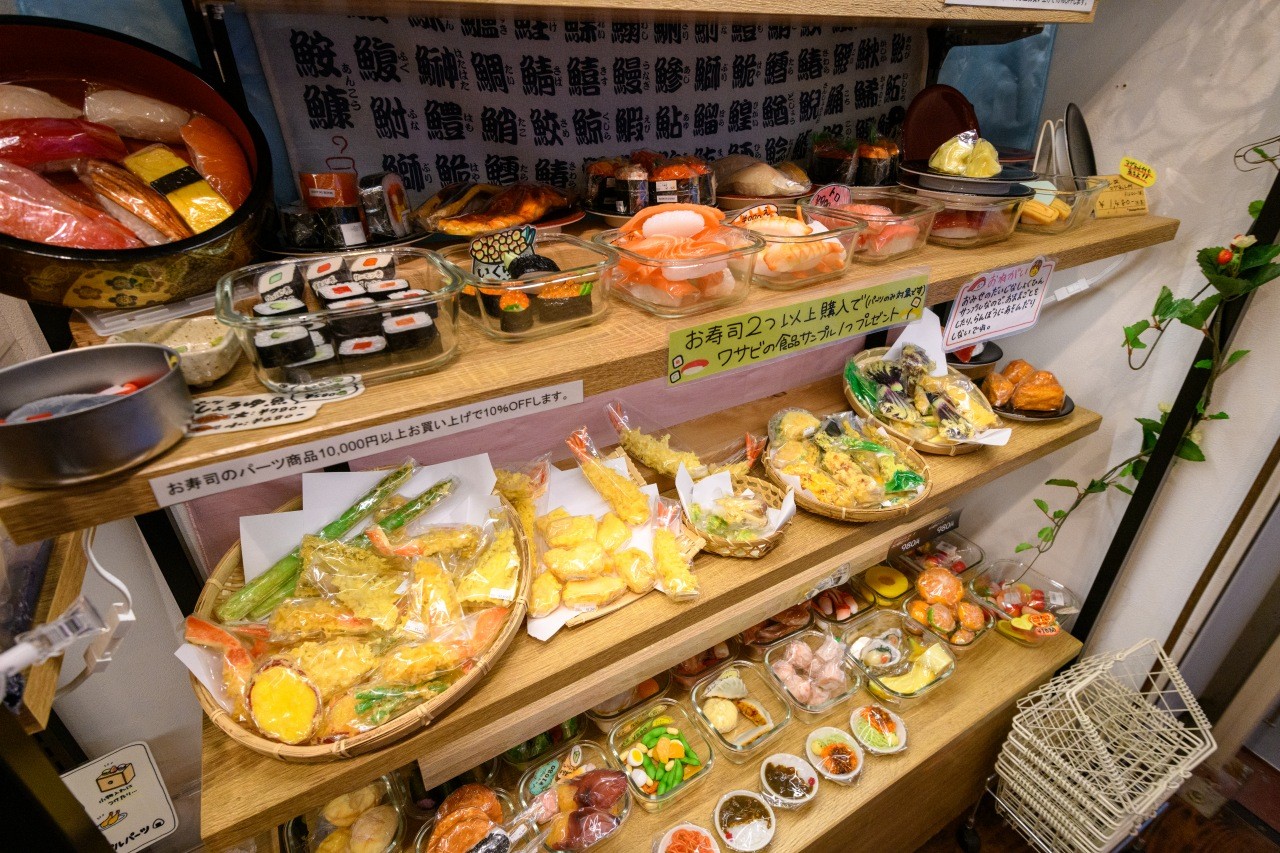
Food samples are realistic models of actual dishes. They're made from plastic or silicone and displayed in restaurant windows.
Their main purpose is to visually convey what the food looks like. For first-time customers, it’s easy to understand the menu at a glance, and the visual appeal helps stimulate appetite. These samples have become an essential part of Japan’s dining culture.
What’s truly amazing is their level of detail. They're so realistic that it's hard to tell them apart from real food. From the rising steam to the shine of sauces and even the cross-section of ingredients, every aspect is meticulously recreated. The quality is so impressive, you might find yourself exclaiming, "Wait, this isn't real?!" Many people are captivated by how lifelike they are. In recent years, more people have enjoyed not just looking at food samples, but also making them or appreciating them as art, expanding their appeal from just viewing to creating and decorating.
Global Recognition and Growing Popularity
Food samples have been drawing attention from overseas in recent years. Tourists from Europe, the U.S., and across Asia find this ultra-realistic menu display method to be incredibly fresh and intriguing, with many sharing them on social media.
Comments like "It looks so delicious, even though you can’t eat it," "The craftsmanship is amazing," and "I want to decorate my home with one after I get back" are common. Food sample experiences have become a popular part of visiting Japan. Accessories and keychains inspired by food samples have also become popular souvenirs among international travelers.
The History of Food Samples
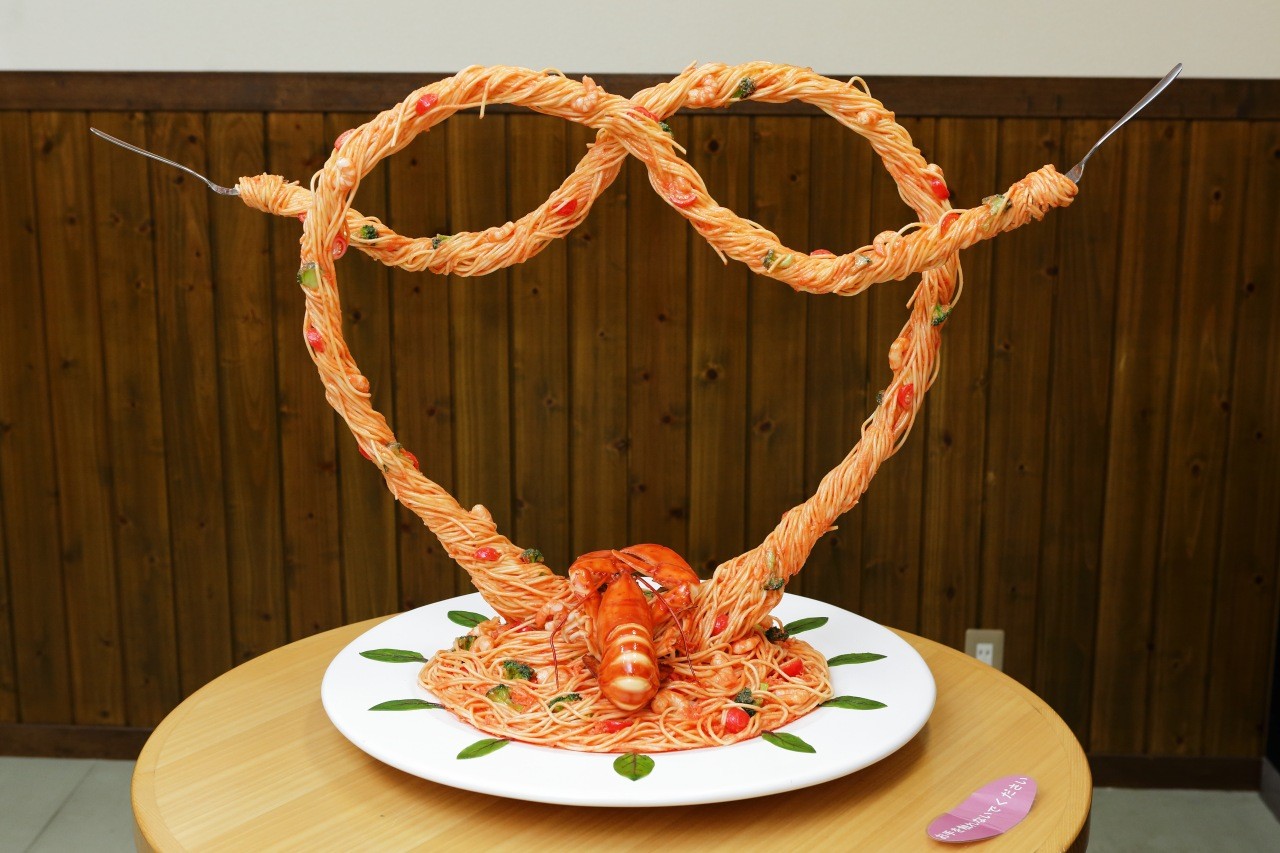
Food samples are believed to have originated between the late Taisho period and the early Showa period. At that time in Japan, dining out was not yet a widespread custom, and literacy rates were not as high as they are today. Influenced by Western culture, more restaurants had begun serving dishes like fried shrimp and hamburg steak. Instead of using written descriptions, shops initially displayed real cooked dishes outside so customers could understand what they offered just by looking. However, real food would spoil quickly, leading to the idea of creating food replicas as a solution.
In 1932, Takizo Iwasaki founded "Iwasaki Seisakusho" in Osaka, which marked the beginning of the food sample industry. His first piece was an omelet, and this sparked the spread of food samples across the country. In the early days, wax was used to make them, but from the 1980s onward, durable synthetic resin became the standard, significantly improving preservation. As Japan’s dining industry grew, so did the demand for these food replicas. Today, Iwasaki's hometown of Gujo Hachiman in Gifu Prefecture is known as a major production area for food samples, with workshops open to the public for tours and hands-on experiences, making it a popular tourist destination.
How Food Samples Are Made
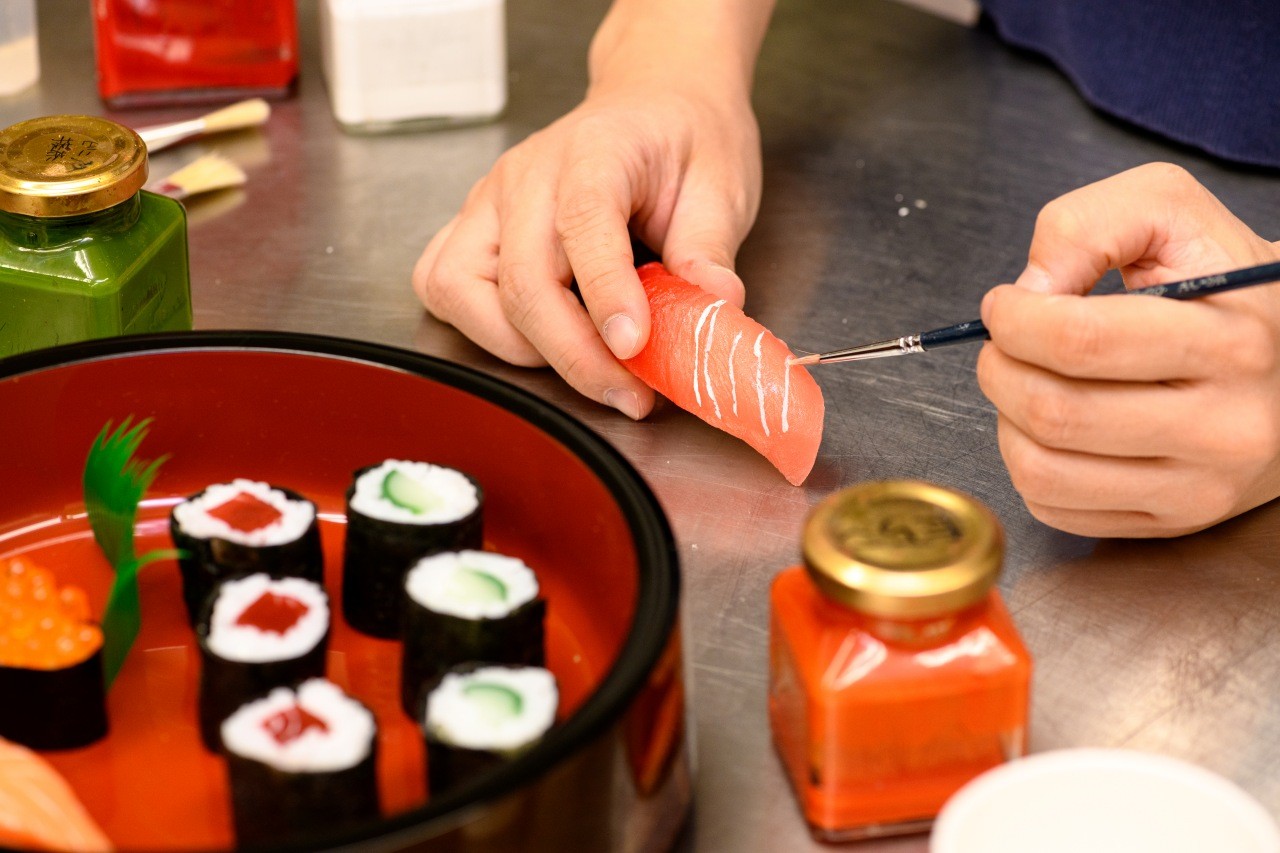
Although food samples may look like they are mass-produced by machines, most are actually handcrafted by skilled artisans. Creating them requires keen observation skills and advanced techniques built through years of experience.
Food samples are typically made through the following steps (though some, like tempura or lettuce, are made without molds):
Step 1: Mold Making
Silicone is poured over real food items to create a mold. Once it hardens, it's removed to form a highly detailed mold that captures even the smallest features.
Step 2: Shaping
Synthetic resin is poured into the mold and heated to harden. Each type of food requires specific materials and temperature control, making this a delicate task.
Step 3: Coloring and Assembly
Once the resin has dried, colors are layered using airbrushes and brushes. The final step is assembling the pieces carefully to recreate a complete dish.
Step 4: Final Touches and Arrangement
The colored parts are put together and arranged on plates. Special attention is paid to sauce placement, plating, and even creating the illusion of rising steam.
The Art of Coloring
The most important factor in making food samples look "delicious" is said to be the coloring. Layering gradients, shine, and translucency helps bring out the texture and appearance of real food. For example, the perfectly browned edges of a tamagoyaki (Japanese omelet), the juicy red of a steak, or the thick, rich texture of curry—each detail is carefully crafted by artisans. It's this attention to detail that elevates food samples from simple crafts to a form of art.
Experience It for Yourself Across Japan
Why not enjoy the charm of food samples not just by looking at them, but by making them yourself? Across Japan, there are many places where you can try your hand at creating food samples while sightseeing. Here are some of the most popular options.
【Tokyo】Food Sample Making and Indigo Dyeing Experience in Asakusa
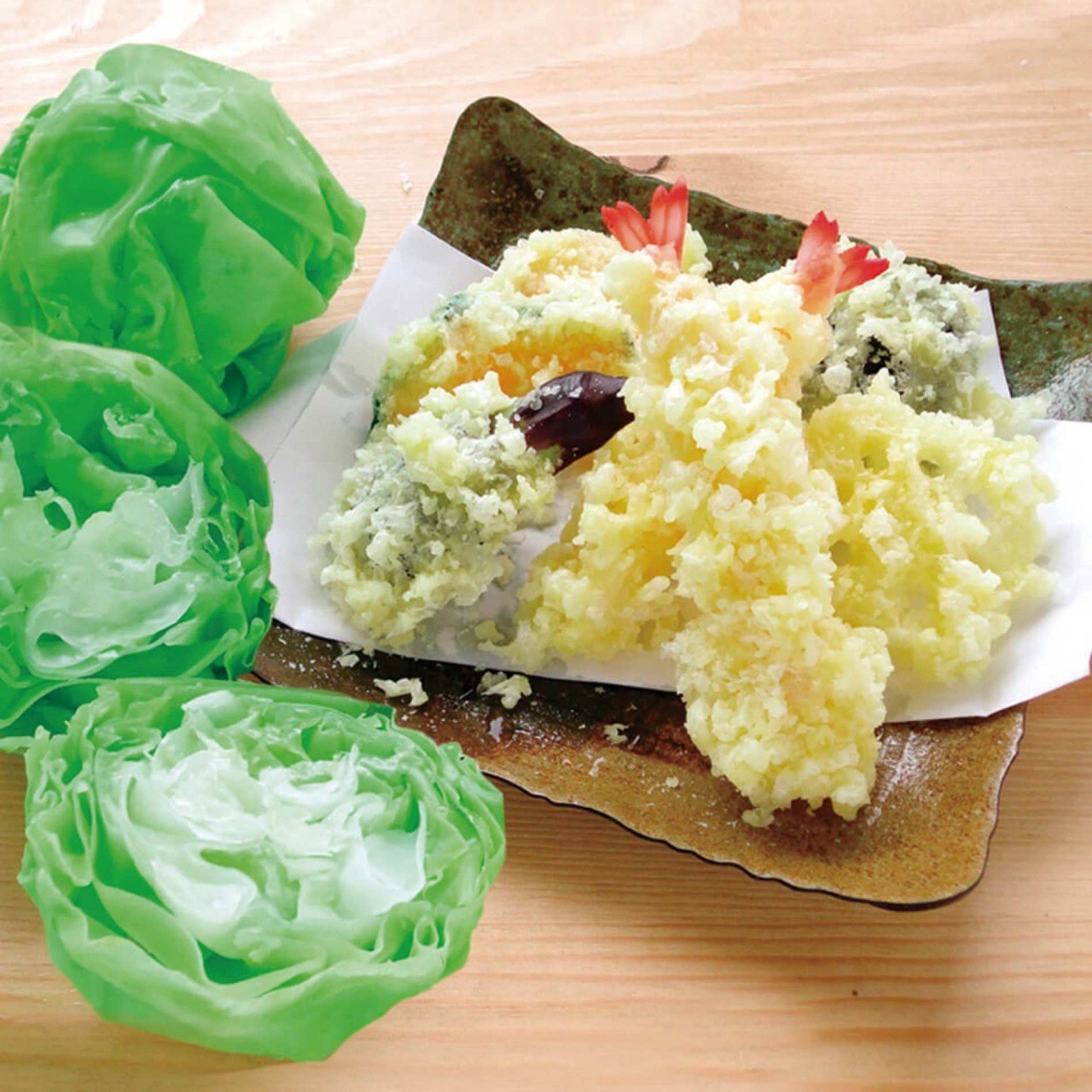
In the downtown area of Asakusa, a popular plan combines food sample making and traditional indigo dyeing. You can try your hand at creating ultra-realistic tempura or sweets, and also experience the traditional Japanese technique of indigo dyeing. It’s especially popular with international travelers, who love being able to experience two aspects of Japanese culture at once. You can even take your finished creations home as a souvenir to remember your trip. This plan is easy to combine with sightseeing at Sensoji Temple and Nakamise Street, making it an ideal experience.
👉For more about indigo dyeing, check out this article.
[kkday]👉Food Sample Making & Indigo Dyeing Experience in Asakusa
[byFood]👉Fake Food (Food Sample) Making Workshop in Tokyo Learn how to make your very own food sample in Tokyo during this colorful, hands-on workshop.
【Osaka】Takoyaki Food Sample Making Experience
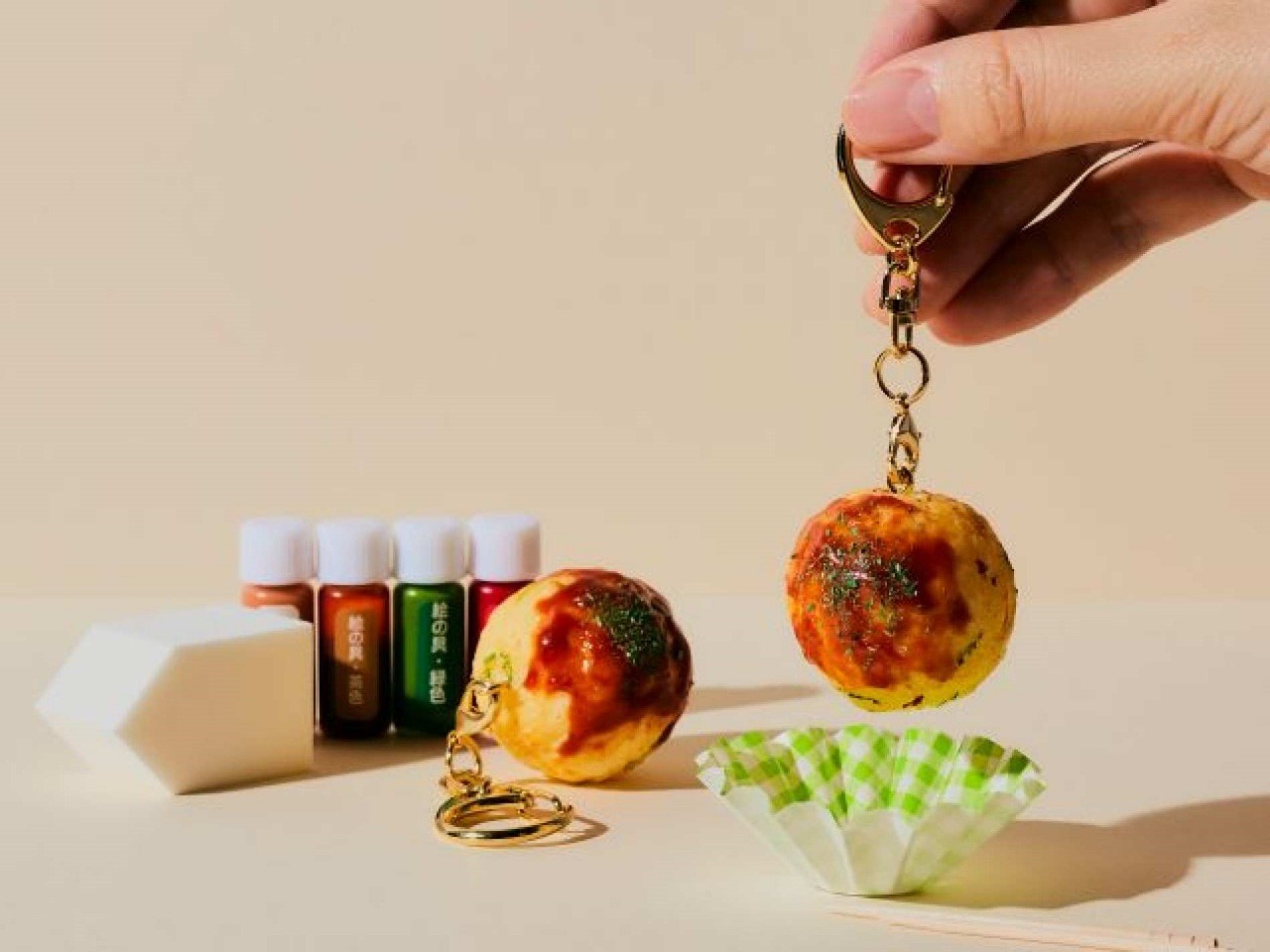
This plan lets you create your very own food sample modeled after Osaka’s famous takoyaki. You'll craft incredibly realistic takoyaki by hand and finish it as a keychain or magnet. The detailed textures of the sauce and aonori (green seaweed flakes) look so real, they'll make your mouth water. It’s a perfect experience for creating a unique and memorable souvenir from Osaka.
information: Design Pocket Osaka Main Store
- Opening Hours: 10:00 - 18:00 (Open all year round)
- Location: 10-11 Namba Sennichimae, Chuo-ku, Osaka, 542-0075 Japan
- Experience Fee: From ¥2,980
- Official Website URL: https://www.designpocket.net/
[kkday]👉Osaka, Japan | Takoyaki food sample making experience | You can choose between a key chain or a magnet! (Design Pocket Osaka Main Store)
【Nationwide】Choose Your Own Food Sample Experience Spot
Food sample making experiences are available not only in Tokyo and Kyoto but also in Osaka, Nagoya, Saitama, and many other areas across Japan.
These activities are popular not only for tourists but also for family trips, date outings, corporate training, and recreation. With reservation sites like "Asoview", you can easily choose the date and location that suits you, and even beginners can join with confidence.
👉Reserve your experience on Asoview!
Enjoy Food Samples Even More with Fun Merchandise
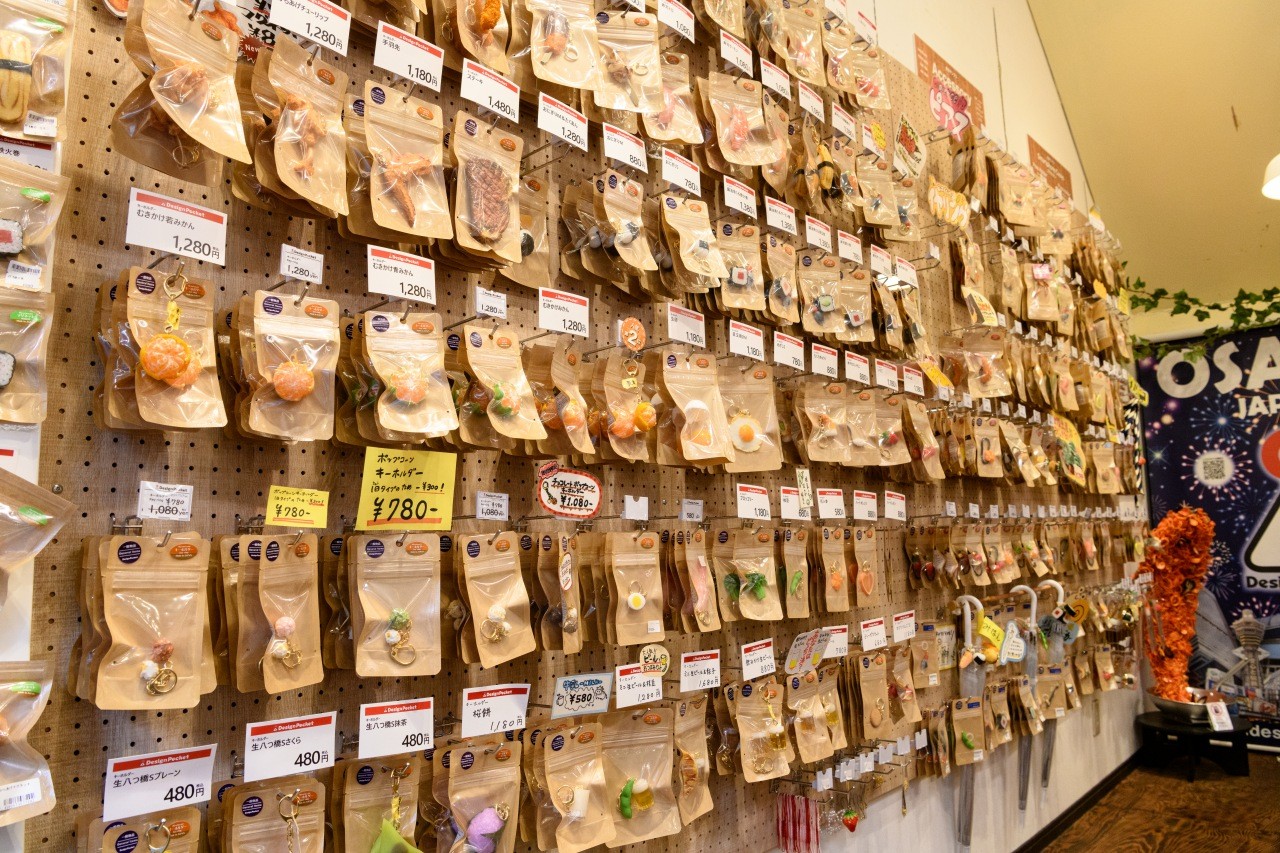
Food samples are fun to look at and display—and just as delightful when turned into merchandise. These realistic and playful items bring a little joy to your everyday life. Here are some of the most popular food sample goods that you’ll definitely want to collect.
Keychains
Miniature food samples made to look just like the real thing are transformed into keychains. With a wide variety of items like pancakes, ramen, sushi, and sunny-side-up eggs, you’ll be filled with the joy of choosing. Their quirky yet detailed designs make them perfect souvenirs or gifts. Pick your favorite dish or a local specialty and show off your unique style.
🛒Purchase recommended food sample keychains on Yahoo! Shopping 👉 Click here
Stationery
Ordinary stationery items transformed into delicious-looking foods are a fun and comforting treat during study or work breaks. These make perfect gifts for kids and small presents for any occasion.
🛒Purchase recommended food sample stationery on Yahoo! Shopping 👉 Click here
Umbrella Markers
Umbrella markers, which attach to the handle of your umbrella, help prevent mix-ups and are gaining attention as useful everyday items. Their adorable appearance also makes them a charming and practical souvenir.
🛒Purchase recommended food sample umbrella markers on Yahoo! Shopping 👉 Click here
Accessories
Food samples are now being used in accessories like earrings, necklaces, and bracelets. Add a touch of playfulness to your outfit with these unique fashion items. In addition to their cute appearance, their distinctive textures and colors make them especially eye-catching.
🛒Purchase recommended food sample accessories on Yahoo! Shopping 👉 Click here
Enjoy at Home! Food Sample Making Kits
If you’re too far to visit in person or want to spend fun time at home with your children, food sample making kits are a perfect choice. These kits are easy to purchase online or at specialty shops and allow you to enjoy authentic sample-making right from your home. With included instructions, even beginners can take part with confidence. They’re also great for family bonding or school research projects. Once completed, your creation can be displayed as a unique interior decoration.
🛒Purchase recommended food sample making kits on Yahoo! Shopping 👉 Click here
Packed with Playfulness! A New Take on Food Sample Experiences
The fun of food samples doesn’t stop at just making them. Unique experiences combining travel or café visits are gaining attention, offering a special time that engages all five senses. Here are some unusual food sample activities worth checking out.
Food Sample Train
The Food Sample Train operated by Nagaragawa Railway offers a one-of-a-kind ride where you can enjoy food samples up close. Inside the train, realistic-looking samples of sushi, tempura, sweets, and more are displayed like a moving museum. There’s even a fun challenge where you guess which items are real and which are fake—entertaining for both kids and adults. The train passes through Gujo Hachiman Station, the hometown of Takizo Iwasaki, the pioneer of Japan’s food sample culture. This experience also connects deeply with the region’s craftsmanship traditions. A special collectible "Food Sample Train Ticket" was once sold and is still a rare favorite among train enthusiasts. If you want to explore more, you can visit Sample Village Iwasaki in Gujo Hachiman and try your hand at making food samples.
Information: Food Sample Train
Operation Period: November 17, 2024 – planned through November 2025
- Location: Gujo City, Seki City, Minokamo City, Gifu Prefecture
- Route: Nagaragawa Railway Etsuminan Line (from Mino-Ota Station to Hokuno Station)
- Fare: Standard fare ¥210 and up
- Official Website URL: https://food-replica-train.com/
Food Sample Making Café
Located in Asakusa, the Food Sample Making Café offers not only the chance to create your own food samples but also to enjoy real meals. Popular plans let you make your own omelet rice, spaghetti, crepes, or parfaits as food samples and then enjoy eating the actual dishes. Many visitors are surprised by how identical the sample and real food look side-by-side. It’s a perfect photo opportunity for social media, and guests often find themselves laughing and guessing, "Can I eat this one?" or "Is this the fake one?"
Information: Food Sample Making Café
Address: 1-13-13 Hanakawado, Taito-ku, Tokyo
- Access: 5-minute walk from Ginza Line Asakusa Station / 4-minute walk from Tobu Asakusa Station / 10-minute walk from Toei Asakusa Line Asakusa Station / 11-minute walk from Tsukuba Express Asakusa Station
- Opening Hours: Saturdays 10:00–18:00 (last entry 17:00) / Weekdays 10:00–17:00 (last entry 16:00)
- Closed: Irregular holidays
- Official Website: https://foodsamplecafe.com/
Conclusion
Food samples are more than just models of food—they’re a cultural phenomenon unique to Japan. From their ultra-realistic appearance and intricate craftsmanship to their humor and artistic flair, they offer countless charms. They're fun to look at, fun to make, and fun to display. We've introduced the appeal of food samples that hit all three marks. Whether as a travel memory, a gift for someone special, or a little treat for yourself, why not explore the world of food samples and discover your own "delicious" surprise?
bibliography
- Japan Eating with Eyes Yasushin Nose Asahiya Publishing
- In-house "craftsman" picture book We are making. (3) Around food, children's club
- Factory tour until you can make something familiar to you! What to see in town PHP Institute
- Food Sample Department Store Gambit
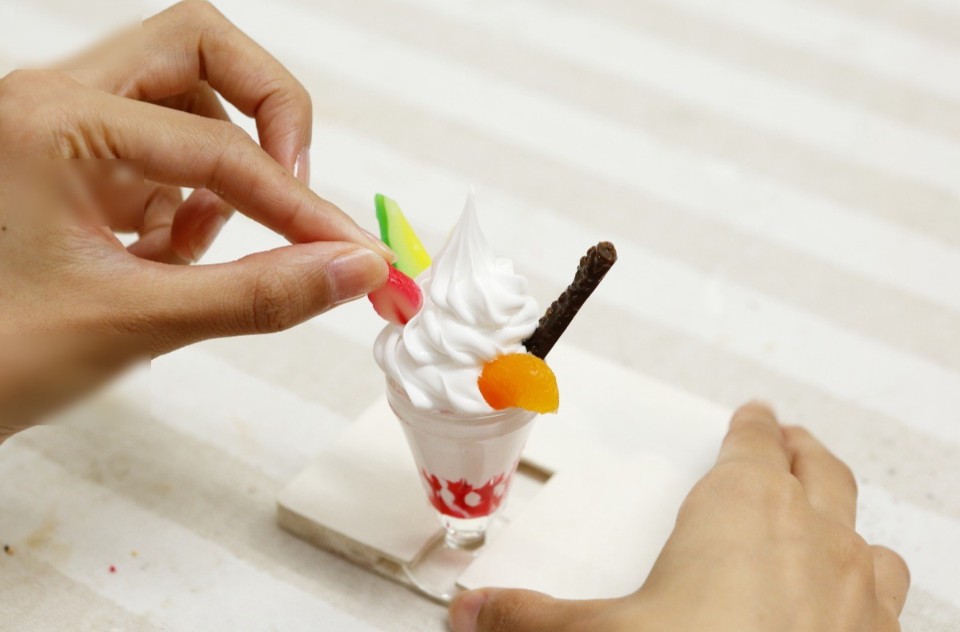
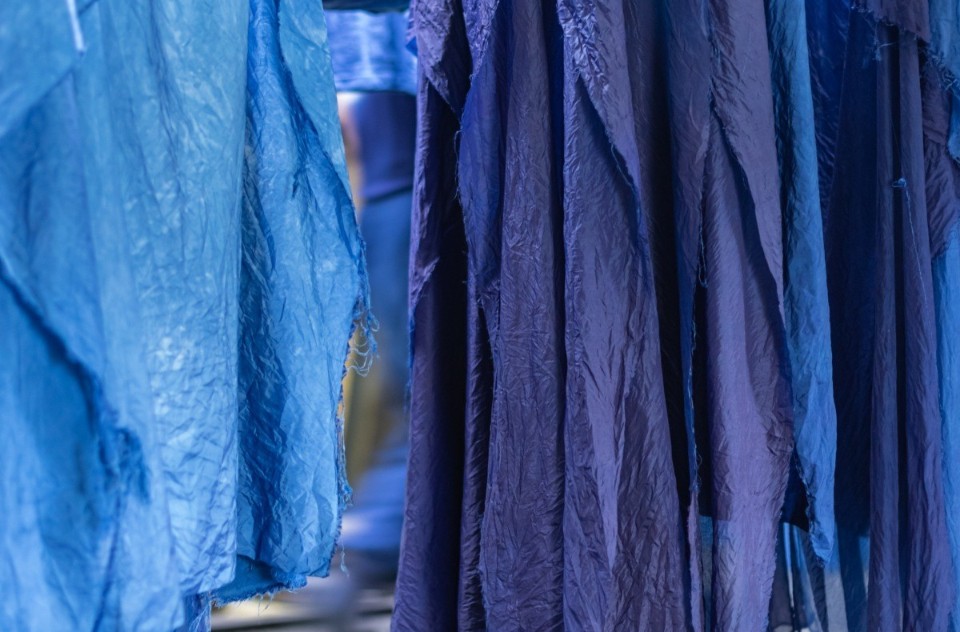

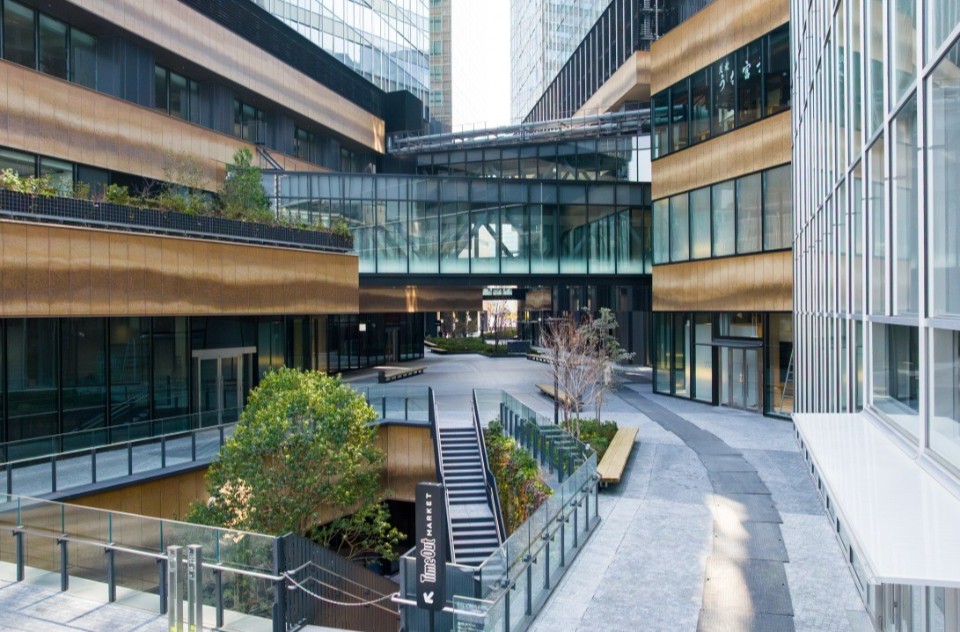
Comments